Recently, an important British alternative fair gave us the opportunity to talk about “Plant Milks” or “Vegan milks” at the legendary London Kensington Olympia after giving conferences on tigernut and horchata with “Slow Food” last year, we said “Ok! “.
It was also the perfect excuse to pick out and write about all that we have learned about dairy milks in different parts of the world over the last two years thanks to ChufaMix in one document.
This is the harvest of many nights of researching and learning, and it portrays only a tiny part of the history of plant milks.
Feel free to copy and paste, but please reference the origin www.plantmilk.org
Enjoy!
PLANT MILKS: THE PAST, PRESENT AND FUTURE
As Tenrence Scully and other authors explain, plant milks are very common in Europe because of different reasons:
- In the past centuries, Europe was full of ancient forests. Everyone used to gather wild nuts.
- Nuts and other seeds could be stored for a long time at home so you could make “milk” whenever you needed it.
- The technique of “emulsifying seeds” or “crushing and filtering them through a cloth” was common knowledge and popular throughout many different eras and civilizations.
- The “milk” could be drunk or could be used for cooking to replace the more expensive oils or fats.
- The animal milk doesn´t last for long and could transmit illness/diseases, because there were no refrigerators! So plant milks have always been a useful resource.
- Dairy milks were essential to “trick” hunger and used as an alternative during the Fasting period in which it was forbidden to eat animal products.
- The plant milk of the poor people was made with local nuts. Rich nobles, however, imported exotic nuts to make their milk.
According to our own research, the older explicit references that we found about the term “plant milk” date back to the ANCIENT ROMAN TIMES (509 AEC 476 EC), specifically the fourth century of the Common Era (AD).
Marcus Gavius Apicius (Apicius), explains in the unique preserved dining compilation of the Roman Empire, “De re coquinaria” that plant milks had been used as a common ingredient in the kitchen at that time.
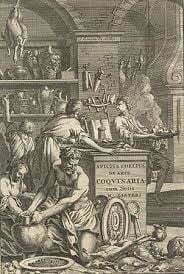
Dining compilation of the Roman Empire, “De re coquinaria”
But Apicius collected not only Roman recipes, but also a wide range of recipes and cooking techniques from other civilizations, such as the Greek and the Mesopotamian.
Roma provided raw materials from all corners of its vast empire and Apicius squandered away his fortune on them.
He had mentioned in his old Latin language “nut milk” (Lacte Nucis“) or the technique of “milking the milk of some plants and trees” (“… sucu seu lacte illius arboris”).
Apicius also explains that these milks were common in Greek cuisine, relating it to the term “Xouxi” in ancient Greek.
However, “plant milks” were probably also common in earlier civilizations because the technique of “emulsifying” and “filtering” crushed seeds with a cloth or rag had been widely practiced since ancient times.
During the MIDDLE AGES (476 CE – 1492 CE), “plant milks” were just as common an ingredient as salt or animal milk.
Recipes with the literal term “plant milk” (hazelnut milk, nut milk, etc.) is repeated in key cooking manuscripts of medieval Europe.
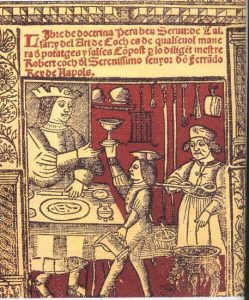
The Catalan book “Llibre de Sent Sovi” (1324).
One of the most pioneering and valued books of the time was the Catalan “Llibre de Sent Sovi“ (1324). It was an inspirational reference for the court´s cooks of many countries such as France, England, Italy, and more.
Among various recipes of dishes made with plant milks, we want to highlight the famous “Menjar blanc“, a soup made with almond milk (“llet d’ametles”) that was also tasted by “Don Quixote” (by Cervantes) as he passed through Barcelona.
In England, “The form of Cury” (1390) is the largest cookbook/recipe book in which King Richard III´s cooks collected 205 recipes of the time.
I have reviewed every recipe one by one and about 45 recipes of the 205 use plant milks. Hazelnut milk, almond milk and rice milk are all mentioned among others.
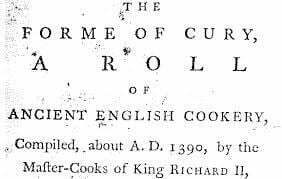
“The form of Cury” (1390) is the largest cookbook of Middle Ages
Plant milks were not only popular in cookbooks, but also used as a medicine of those times.

“The English House Wife” (1614 BC) descrives medicinal uses of almonds milk
Gervase Markham, in his famous “The English House Wife” (1614 BC) recommended mixing almonds milk with other herbs to alleviate fever.
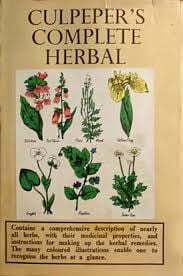
“The complete herbal” (1653 CE) descrives medicinal uses of cucumber seeds milk
Nicholas Culpeper in his “The complete herbal” (1653 CE), among other prescriptions, mentions in the “cucumber´s” section, how to prevent and relieve liver ailments by making milk from “cucumber seeds”:
<< The usual course is to use the seeds in emulsions, as done to make almond milk. >> (“Cucumbers” section, page 61)
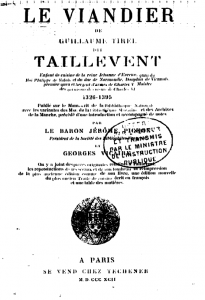
The mythical “Le Viander” (s. XIV)
In France, the mythical “Le Viander” (s. XIV) of Taveillent, or “Le cuisinier François” (1651) of Pierre de la Varenne, among many other books, often mentioned almond milk (“laict d’amandes”) as an ingredient in many recipes.
In Italy, we declare ourselves as number 1 fans of the great master Martino (1470), an outstanding chef, who had inspired many other Italian chefs such as Battista Platina or the “Neapolitan Collection manuscript”(15th Century).

Master chef Martino
Master chef Martino´s specialties included “rice cooked in almond milk” or “hemp seed and almond soup”.
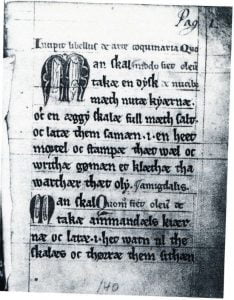
A page from the scandinavian recipe book “Libellus Art Coquinaria” (XIII-XIV Century).
In Scandinavia, a compilation of various prescriptions written in Old Danish, Low German, and Icelandic was found in a Danish monastery; the ancient “Libellus Art Coquinaria” (XIII-XIV Century).
With no more than opening the first page have we discovered our first reference to plant milk´s in the fourth recipe of the book in which the author explains how to make an almond milk “appetizer” before going on to reference many other plant milks.
In Germany, the manuscript “Das Buch von guter Speise” (1350) also certifies the importance of plant milks in the kitchen.
The ARABIC CULTURE (622 DC- DC 1492), while Europe had immersed itself in ignorance, barbarism and the inquisition, was not only a leader in the arts, science, culture, medicine and agriculture but also:
“Istahlaba“
“Istahlaba” means “making plant milk” in classical Arabic. In English, “to milk” could be applied to any nut or seed as the master author Charles Perry explains in his “History of Arab cookery”.

“History of Arab cookery”, Charles Perry
In ancient Arabic manuscripts such as the “Book of Dishes” (Kitab al-Tabikh, 10AD) of Baghdad or the “Anonymous Al-Andalus CookBook”, of 1200 AD (13th century) plant milks were commonly used in their kitchens.
In the MODERN AGE (1492-1940) in northern Europe, the humble people made plant milks with local seeds such as walnuts (nut milk) or chest nuts (chestnut milk), meanwhile the Nobles ate dishes which used the most expensive almonds, imported from the Mediterranean.
Don´t lose these “posters” from the early 20th century, Germany.
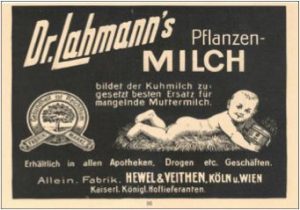
German “posters”
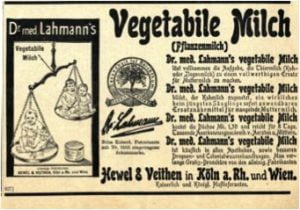
In some areas of Spain many families made plant milks for home consumption or for sale in small scale some commonly made milks were peanut milk (Zaragoza), pumpkin seeds milk (Murcia), and almond milk (Balearic Islands).
During the 19thcentury and up to the first half of the 20th, tiger nut seeds were sold everywhere in Spain, and tiger nut horchata (“horchata de chufas”) was a very popular plant milk which could be found anywhere from Madrid to Barcelona, and of course, in its place of origin, Valencia.
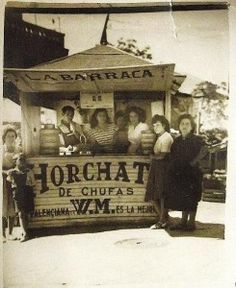
Tigernuts milk or “horchata” shop in Madrid (Spain).
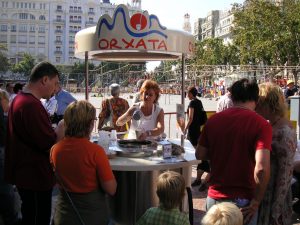
Traditional horchata trolley in the streets of Valencia (21st century)
In Italy plant milks are tattooed in their deepest DNA. And not only by the legendary master Martino.
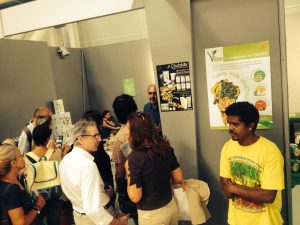
Sana Organic Fair (Italy, 2015)
In the wonderful Italian organic fairs, while we were “Chufa Mixing” plant milks, the Sicilians explained to us how their grandparents had made pistachio milk at home, and how popular homemade almond milk was in Southern Italy.
In ASIA, Domingo F. Navarrete (1704), a missionary in China, was the first European to confirm the existence of soy milk in his book “A collection of voyages and travels“.
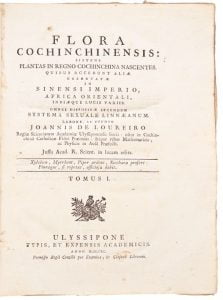
“The Flora of Cochin China”, Juan de Loureiro
Soy milk was also mentioned by Juan de Loureiro, Portuguese Jesuit in his book “The Flora of Cochin China” (Source: https://www.soyinfocenter.com/HSS/soymilk1.php
Coincidentally, I am writing this article from South Asia where we are recording some homemade videos on local plant milks.
In Malaysia and Thailand, they do not say “soy milk”, they say “soy water” (“air-Tauru” or “taufu soy” in Malaysia and “naam-Tauru” in Thailand), and it is a very popular homemade drink.
In Melaka and Penang (Malaysia), historical crossroads of trade in Asia, it is ancestral tradition to sell soy milk in the streets, produced by families in their homes.
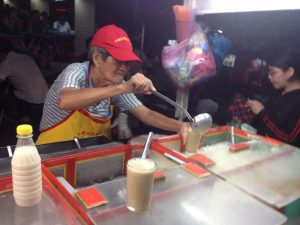
Soy milk trolley in the chinese night market (Malaysia, 2015)
We’re seeing and experiencing first-hand how cooking with coconut milk and drinking soy milk are still very strong traditions here. We are also unfortunately discovering that the introduction of industrial cow milk through advertisements on TV has begun to manifest the traditional culture with the all so well-known message:
“Cow milk is highly recommended for everybody, drink cow milk and get with the times!…”
In NORTH AMERICA 1899, our adventurous, vegetarian, and godly heroine Almeda Lambert from Battle Creek, Michigan describes how to make all types of plant milks using peanuts, almonds, tiger nuts, cashews, pine nuts, coconuts, and so on and also how to recycle the pulp in her book “Guide for Nut Cookery”.

Ms Lambert, the author of “Guide for Nut Cookery”.
Ms Lambert explains how missionaries arriving from “Indian lands” tell how the natives are able to grind seeds and nuts, and emulsify efficiently, although using rough archaic tools.”
At the same time, the USDA (US Department of Agriculture United States) published in 1897 a “Comparison of the composition of Soy-bean milk and cow milk.”
In SOUTH AMERICA, plant milks are very common. They are named “horchata” because of the Spanish influence. In pre-Columbian times they would have had their own indigenous names because many of these milks are of native origin. They made plant milk or “horchata” with almonds, rice, sesame, and more seeds, depending on the country.
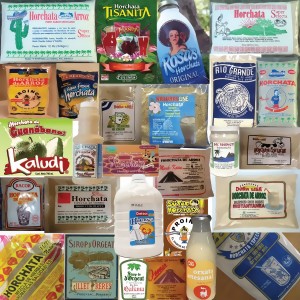
Horchatas in the world
TODAY, although homemade plant milk production persists, its presence is a minority, and the dominance of industrial plant milks has overtaken.
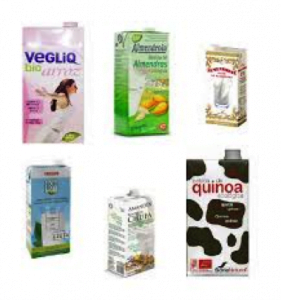
Industrial plant milks
Such as the rest of the precooked and “fast food” sold in many supermarkets, the world of plant milks has also been colonized by its industrial version.
Of course, as the popularity of “vegetarian” and “green” products increases; many people actually believe that these industrial plant milks also are “very healthy” and have a small carbon footprint.
Its high price and beautiful packaging or bottle designs sell you an even more desirable version or illusion that what you are buying is “good for you and good for the planet!”
Nothing could be further from the truth:
Dairy milks are “medicinal” when they are natural and are not treated with aggressive industrial and thermal processes that eliminate their enzymes, amino acids, vitamins, minerals, etc ..
Anyway, yes, you can be sure that it will not contain any lactose or gluten and that they are “Vegan friendly” products.
THE FUTURE
For millenniums plant milks have been made at home naturally and nutritiously, using gathered wild nuts and seeds.
In the 21st century this “art”, like many other hand-crafted products linked to local traditions, is endangered.
Local products are not part of the picture.
Large transnational brands remove their “share” or market share, so they have a great solution:
- Take over these local products and include them in their “portfolio” of industrial products.
- In parallel, and to cover their tracks, they also “suggest” to the sanitary governments to change laws to say that if “milk” is not pasteurized or sterilized, it is dangerous for health.
Result: lots of bureaucratic health laws and obstacles to the small family businesses that sell the real natural versions and eliminate all competitors.
All in the name of food safety for consumers, of course!!
This is what we are seeing in the real lives of the people from many of the countries that we are visiting with Chufamix.
In Melaka and Penang (Malaysia), historical crossroads of trade in Asia, it is ancestral tradition to sell soy milk in the streets, produced by families in their homes.
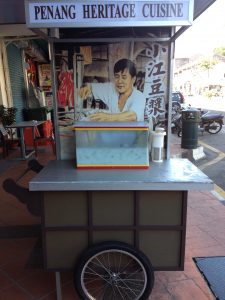
Street art about soy milk sellers (Penang, Malaysia, 2015)
This is still practiced today, but hidden in the backyards of their humble homes because nowadays, strict health legislations control and illegalize the traditional production of soy milk.
Coincidentally, it was a few years ago when large Asian and Western transnational companies began selling industrially made versions of soy and coconut milk.
We live in a globalized and accelerated world where the only thing that seems interesting is the money at any cost.
However, at least for now, no one can tell us what to do or not to do in our homes. Thanks to the “cloths”, the 21st century cloth “Chufamix”, and other excellent machines, little by little people will dare to make their own “plant milks” at home.
Here some brief reasons why to make your own “milk”
– It takes less time to make natural plant milk at home than going to a store to buy the industrial version.
– Fresh and homemade milk is significantly more nutritious.
– It is much cheaper.
– You control what you eat because you choose the seeds that you want.
– It doesn´t generate waste and it consumes less power.
– You don´t have to collaborate with the large multinationals that are destroying our planet.
CONCLUSIONS
Dairy free milks are not a fad and have been always with us.
Will we recover an extinct tradition of our ancestors, to make our own milks at home?
Who knows, but if people stop watching so much TV, maybe some things will change.
This planet needs it!!
Andoni Monforte Duart (Horchata artisan and the inventor of Chufamix)
Translated to english by Phil Barendrecht

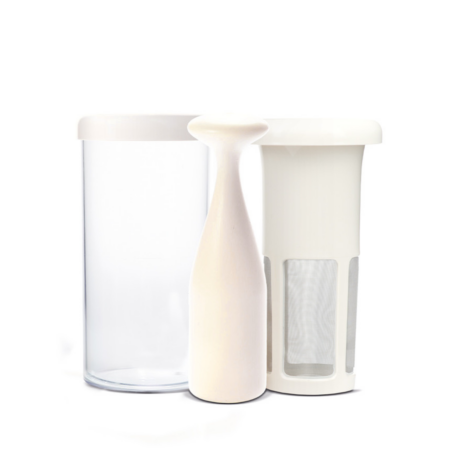
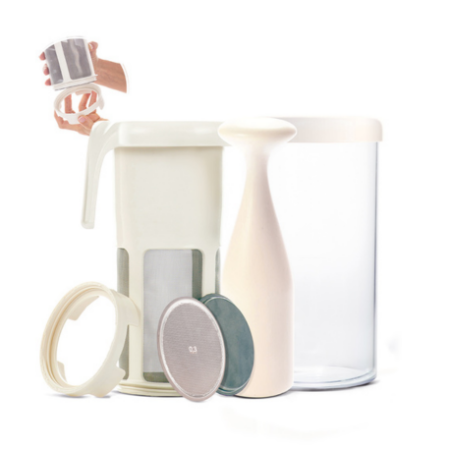
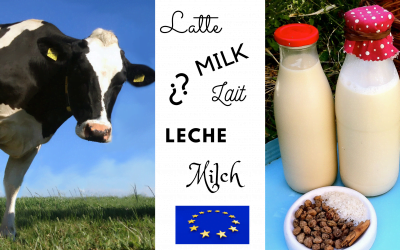
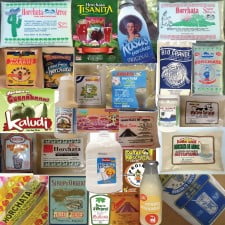
Upon reflection, I felt like your article was relevant and timely,
either) and living free, living life in full appreciation of the randomness and patterns of nature, keeps people
feeling sane and feeling joyous. Philosophizing about deep philosophical memes is likewise an experience of a different order that can assist us to make the discovery
of self understanding. http://health-topic.com/